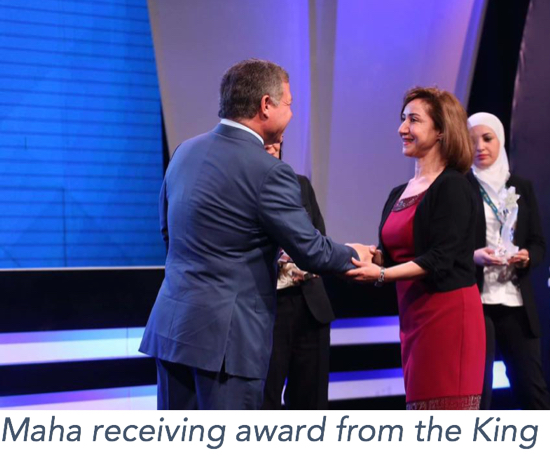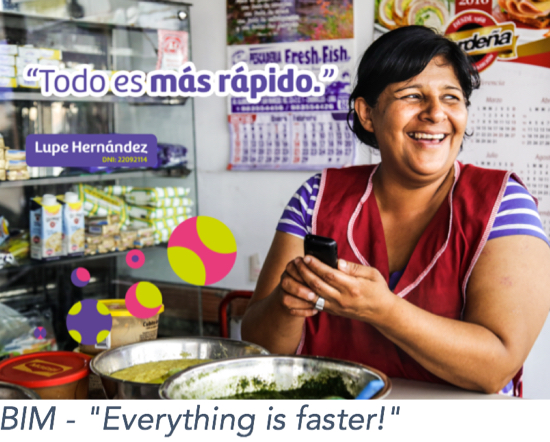
I had the good fortune last week to be part of the Glenbrook team attending the FinTechStage Inclusion Forum in Jakarta. Happily, among the attendees were two women I have known for several years: Maha Bahou of the Central Bank of Jordan and Carolina Trivelli of Pagos Digitales Peruanos.
Peru and Jordan are two of several countries around the world that are aggressively moving to establish market-wide digital payments platforms designed to increase financial inclusion.
We were in Jakarta in connection with Glenbrook’s work with the Bill & Melinda Gates Foundation’s Financial Services for the Poor group – and in particular the foundation’s Level One Project, a vision and a blueprint for how such national systems might best work. I’m pleased to report that both the Jordan and the Peru platforms embody many of the key design principles of Level One.
That’s good news. But what I want to emphasize is how strong leadership shaped the development of these systems. Maha and Carolina, each in her own way, were highly effective generals of their armies. They drove their projects ahead, dealing with untold complexities, multiple constituents, conflicting priorities, and ambiguous business models. And they succeeded. I think it is safe to say that neither “JoMoPay” in Jordan nor “BIM” in Peru would be where they are today without the leadership of these women.
Maha Bahou and JoMoPay
In Jordan, Maha was a career central bank officer running the payments division when, in 2013, she became increasingly aware of financial exclusion and its consequences for the lives of poor people in Jordan. This concern dramatically escalated as Jordan began to experience a flood of refugees, many from Syria. Maha brought her concerns, and her initial thoughts on a digital payments platform accessible to all, to the management of the central bank and then later to the “national payments council”, a group including the major commercial banks in Jordan.
I wish I could have been there to hear those early discussions. I’ve heard Maha speak many times since then, and have been impressed by the breadth of her vision, her ability to intelligently marshal arguments in support of her points, and the passion of her delivery. I’m not surprised to hear that the bank and council approved – relatively quickly – her plans to develop and operate JoMoPay in the safe environment of the central bank.
Maha put together a working group of interested banks and other participants, and consulted to them throughout the project. But there is no question that the central bank was in charge; the solution was not built by consensus. This approach had the advantage, of course, of enabling faster action, but it had the risk of alienating players (particularly the banks) whose long-term participation would be necessary for the success of the project. Maha successfully “threaded the needle” through an ongoing, and no doubt exhausting, process of consultation and convincing.
What did they build? A real-time, credit-push switch that connects all institutions holding transaction accounts for customers. This includes both banks and licensed non-banks. There is no notion in Jordan that the non-banks issue “eMoney” (as opposed to “real money”). As a result transfers can freely flow between and among all institutions.
Maha started in 2013, with 40 institutions participating in the working group. The first pilot went live in April 2014 with two institutions connected. The full launch began in October 2016 with six institutions; more are coming on board steadily. The switch is also connected to other payments services providers, to the national ATM switch, and to various processors.
JoMoPay has several features that merit notice. One is a focus on fraud management capabilities at the “hub”. This reduces the need for duplicated investment at the “edge” (by banks and other providers). The banks retain the compliance obligation but can use a utility for many fraud detection tasks. Interestingly, one enabling component here is a requirement that “on us” transactions be routed through the switch. The second feature is a system wide brand – “JoMoPay” – so that payers and payees have a common vocabulary, regardless of their financial institution.
JoMoPay went live with multiple use cases supported – not only P2P (the typical starting point for such systems) but also merchant payments, bill payments (including all government fees and tax payments, school payments, and medical payments), business-to-business payments, and eCommerce payments. I’m particularly interested in this, as around the world there is a demonstrable problem with dormant or infrequently used mobile wallets: people receive a G2P payment or a personal transfer, and them immediately “cash out” as they can’t spend the money anywhere. JoMoPay tackles that problem at the outset.
When Maha talks about the challenges of getting JoMoPay launched, the primary issues were interoperability (at all levels) and the interconnected topics of issuer economics and agent sharing. This is, arguably, the toughest problem in getting payments systems for financial inclusion going: you need institutions to invest and to commit to participate, but you need low prices (and the easy access to agents) to serve the poor. Maha convinced participating institutions of the merits of low fees to achieve financial inclusion. She matched that with a subsidization of the switch fees for the early years of the initiative.
Volume is low in these early months, but there are encouraging signs of growth. Significantly, Maha just led the effort to transfer control of the system from the Central Bank to Jo-PACC (Jordan Payments & Clearing Company), to ensure that ongoing stewardship of the system is in the hands of the participating banks and later, the non-bank providers as well.
I’ll be interested to watch the evolution of the system. I’m convinced it wouldn’t have happened as it did, or as quickly as it did, without Maha and the support of the Central Bank Governor and Deputy Governor who provided political capital this make this happen. I’m not alone in that view. In 2016, the King Abdullah of Jordan gave Maha an Award for Excellence in leadership.

Carolina Trivelli and Peru’s BIM
Peru had a different starting point. The government took strong and early steps, not only in financial inclusion, but on broadly defined social inclusion – establishing a cabinet-level department, the Ministry of Development and Social Inclusion, in 2011. Carolina Trivelli, an economist and researcher, was instrumental in the creation of the Ministry and its strategy (“Incluir para Crecer” – “Include to Grow”) and became the first Minister. She was active and visible on many fronts during her three years at the Ministry. When I visited her in Lima in 2014, I witnessed two separate occasions when a stranger approached her on the street to thank her for her service to the country!
In 2013, the government issued a new law defining eMoney issuance, allowing both banks and licensed non-banks as issuers, and calling for interoperability among participating institutions. Policy makers left it to the financial community to figure out how to do this. The banks decided on a new entity, which ultimately became Pagos Digitales Peruanos (PDP). Carolina was tapped to run this in 2014, a complete “newbie” in payments, but someone with a passion for the cause of financial inclusion.
Carolina had the opposite situation to the one that Maha had faced in Jordan. Instead of a central bank designing the system, she needed instead to build a system from the ground up – by consensus from the participating institutions – 35 at last count. As one can imagine, there were endless issues to think through – from the technical architecture, to ownership and governance structures, to use case support, economics, and brand. I spoke from time to time with Carolina during this “build” phase – and it was clear that it was at times difficult (to put it mildly). But her perseverance (and that of the bankers working with her) and her persuasive capabilities paid off. BIM piloted in August 2015 and launched in February 2016, with initially 9 institutions connected and 28 connected now.
One of the unusual choices made by the Peruvian group was the handling of customer accounts. As the law required banks to have separate eMoney accounts for customers (a banked customer can transfer money from their “real” bank account into their “eMoney” account), all institutions needed to find a way to support wallets, as well as interoperability. An RFP process resulted in one vendor (Ericsson) being chosen to provide wallet services for issuers as well the “switch”. This meant that from a technical point of view, transfers among wallets are similar to “on-us” transactions: a simplifying solution for the beginning of the service. It also enabled a common experience for consumers across providers – the user interface/USSD screens are common for all BIM wallets. (The agreement with Ericsson does specify that an issuer may opt to use another wallet, and still interconnect on the platform).

What were the toughest parts in bringing the service to market? Carolina mentioned several: persuading financial institutions to use a common brand (“BIM”), getting agreement on a common fee structure (low!) to consumers until the service reaches break-even, convincing the telecom regulator to allow the MNO’s to negotiate with PDP as a single institution rather than individually with each financial institution (for USSD access fees), and, not the least, the issues of how to write operating rules cooperatively with that many institutions participating.
BIM’s biggest ongoing challenge has been agent interoperability, the economics surrounding that, and the management of “cash-in” and “cash-out” functions. Although Carolina has left the active management of PDP (she remains the chair of the board), she continues to work on this issue, among others. The latest initiative is the establishment of what she refers to as “BIMers” (“beemers”); individuals who work sort of like mobile ATM’s, in partnership with a fixed-location agent. Think of it as the “Uber of cash-in/cash-out”.
Looking Ahead
Both JoMoPay and BIM are in their infancy, facing the challenge of getting consumers signed up and then ensuring that consumers use their wallets. The latter, as both Maha and Carolina well understand, requires enabling merchant acceptance – making money “spendable”. In both countries, there are multiple efforts underway to achieve this.
Only time, of course, will tell the story of the eventual success (or not) of these services. But I’m clear that the very fast track of these programs – from concept to reality – can be attributed to the characters, capabilities and convictions of their leaders. I understand there is a “great man” theory in history – that certain highly influential individuals, due to either their personal charisma, intelligence, wisdom, or political skill, have been able to make a decisive impact on history. Here we have two “great women” who have clearly made a difference in their countries.

